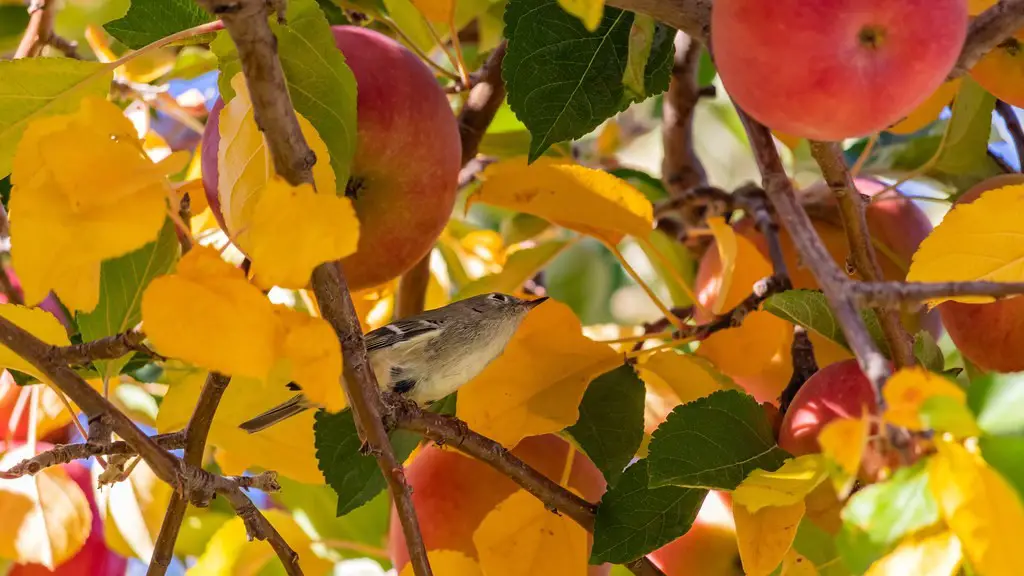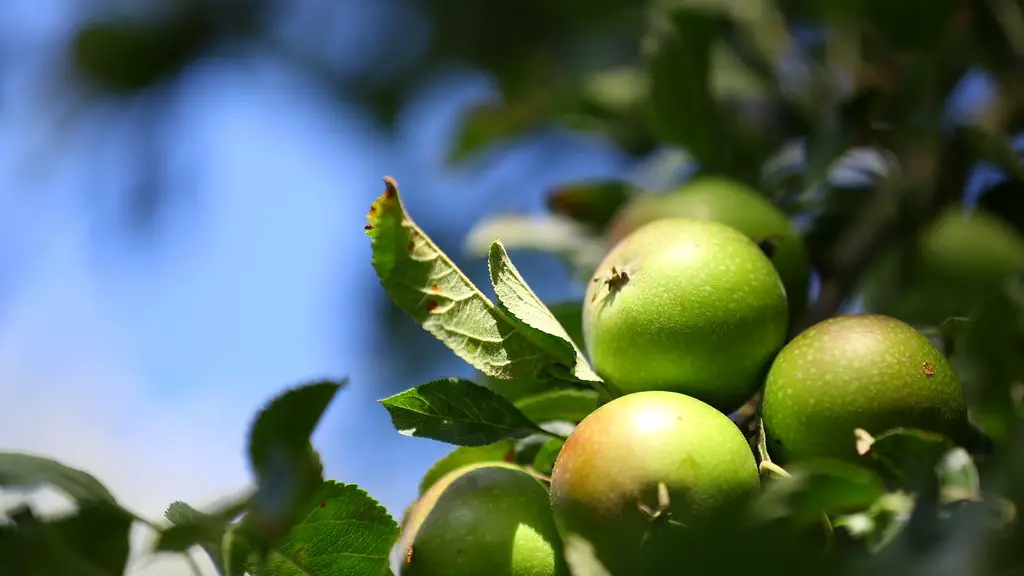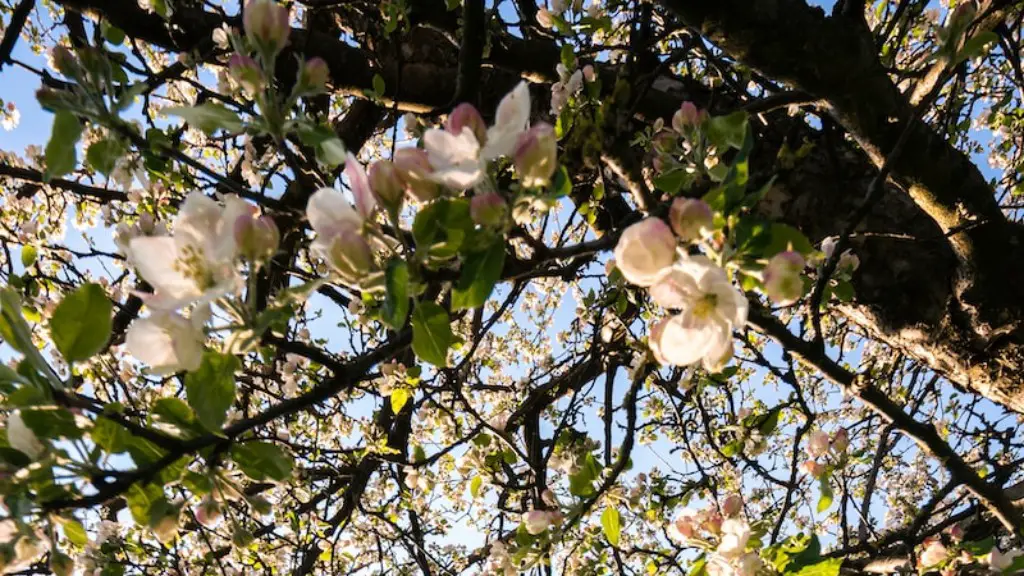The reasons why apples are falling off the tree can be multiple and complex. Generally, it is due to either too much crop load (overbearing) or not enough pollination. Overbearing means that the tree has too many apples on it compared to the size of the tree. Unpollinated apples occur because of a lack of bees or other pollinators, limited weather conditions or unviable pollen. It is also important to bear in mind that apples can naturally fall off the tree when they are ripe and ready to pick.
Under-fertilization can impair the tree’s ability to produce a sizable crop. This happens when the tree is not receiving enough nutrients to support the apple production process. This can result in the tree becoming prone to pests, diseases, drought and too much heat. On the other hand, over-fertilization can also be a factor. It stimulates the production of more leaves and branches than necessary and ultimately disrupts the balance between them and the fruit, leading to smaller apples.
Insects and Diseases
Various types of pests and diseases can also cause apples to drop prematurely. Insects such as thrips, aphids, mites and caterpillars are among the most destructive pests that cause decline in productivity and fruit quality. Diseases such as fire blight, leaf curl and powdery mildew tend to rob the tree of its nourishment, eventually leading to apple drop. It is also possible for neighboring trees to spread diseases to other parts of the orchard.
Water and Temperature
A sudden and drastic change in temperature and/or rainfall can cause apples to ripen quickly or irregularly. Too much heat causes the apples to ripen quickly during the growing season, while cool temperatures during dormancy can result in a delayed or stunted bloom. In terms of rainfall, too little or too much can prevent pollination or cause the branches to bend and the fruit to drop prematurely.
Cultivation Practices
Finally, some cultivation practices can lead to apple drop. Pruning stresses the tree and interrupts the apple production process, leading to more off-season apple drops. Unchecked suckering can also lead to similar results, as it diverts energy from the main stem of the tree to the center of the tree. Suckering also increases the crop load and competes with the main stem, leading to unviable apples and fruit drop.
Inadequate Nutrition
Insufficient levels of nutrients like calcium, zinc and iron are also a common cause of apple drop. Some trace elements like magnesium, selenium and boron are also essential for healthy apple growth. Trees require adequate amounts of nitrogen, phosphorus and potassium to keep up with the growth of the apples. Too little nutrient uptake due to poor soil quality and insufficient water can also lead to apple drop.
Restrictive Microclimate
Restrictive microclimates such as high slopes, cold-air drainage or exposure to excessive winds are also common causes of apple drop. Drought stress may occur when trees are subjected to restricted or prolonged amounts of water. As a result, trees can become stressed and weakened, leading to apple drop.
Mechanical Problems
Other mechanical factors such as improper pruning, improper thinning and harvesting, or insufficient structure can lead to changes in the flow of nutrients, water and sunlight needed for apple production. This can cause apple drop due to the changes in internal physiology of the tree, as well as a decrease in the overall productivity.
Crop Loads
Crop loads also need to be managed carefully to avoid overbearing. The ideal crop load for an apple tree is usually around 25 fruits per branch. A higher load can cause decreased fruit size, early fruit drop and delayed tree development. Abnormal fruit sizes, delayed maturation and uneven ripening due to high crop loads can also lead to fruit drop.
End of Season Drop
In addition to drop caused by pests and other environmental factors, apples can naturally fall off the tree when they are ripe and ready to pick. This is known as end-of-season drop and is caused by a combination of numerous factors such as dry weather, insufficient pollination and overbearing. Such apples are often softer and have fallen off the branch naturally, as opposed to being knocked off or partially detached.


